HPV8-induced STAT3 activation led keratinocyte stem cell expansion in human actinic keratoses
- PMID: 38916963
- PMCID: PMC11383611
- DOI: 10.1172/jci.insight.177898
HPV8-induced STAT3 activation led keratinocyte stem cell expansion in human actinic keratoses
Abstract
Despite epidermal turnover, the skin is host to a complex array of microbes, including viruses, such as HPV, which must infect and manipulate skin keratinocyte stem cells (KSCs) to survive. This crosstalk between the virome and KSC populations remains largely unknown. Here, we investigated the effect of HPV8 on KSCs using various mouse models. We observed that the HPV8 early region gene E6 specifically caused Lrig1+ hair follicle junctional zone KSC proliferation and expansion, which would facilitate viral transmission. Within Lrig1+ KSCs specifically, HPV8 E6 bound intracellular p300 to phosphorylate the STAT3 transcriptional regulatory node. This induced ΔNp63 expression, resulting in KSC expansion into the overlying epidermis. HPV8 was associated with 70% of human actinic keratoses. Together, these results define the "hit-and-run" mechanism for HPV8 in human actinic keratosis as an expansion of KSCs, which lack melanosome protection and are thus susceptible to sun light-induced malignant transformation.
Keywords: Adult stem cells; Cell biology; Mouse models; Skin cancer; Stem cells.
Figures

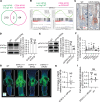
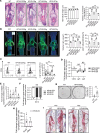
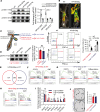
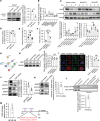
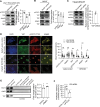

Similar articles
-
HPV8 Field Cancerization in a Transgenic Mouse Model Is due to Lrig1+ Keratinocyte Stem Cell Expansion.J Invest Dermatol. 2017 Oct;137(10):2208-2216. doi: 10.1016/j.jid.2017.04.039. Epub 2017 Jun 6. J Invest Dermatol. 2017. PMID: 28595997 Free PMC article.
-
Identification of C/EBPα as a novel target of the HPV8 E6 protein regulating miR-203 in human keratinocytes.PLoS Pathog. 2017 Jun 22;13(6):e1006406. doi: 10.1371/journal.ppat.1006406. eCollection 2017 Jun. PLoS Pathog. 2017. PMID: 28640877 Free PMC article.
-
E6 and E7 from beta HPV38 cooperate with ultraviolet light in the development of actinic keratosis-like lesions and squamous cell carcinoma in mice.PLoS Pathog. 2011 Jul;7(7):e1002125. doi: 10.1371/journal.ppat.1002125. Epub 2011 Jul 14. PLoS Pathog. 2011. PMID: 21779166 Free PMC article.
-
Beta-Genus Human Papillomavirus 8 E6 Destabilizes the Host Genome by Promoting p300 Degradation.Viruses. 2021 Aug 21;13(8):1662. doi: 10.3390/v13081662. Viruses. 2021. PMID: 34452526 Free PMC article. Review.
-
Dermoscopy of keratinocyte skin cancer.G Ital Dermatol Venereol. 2016 Dec;151(6):649-662. Epub 2016 Sep 2. G Ital Dermatol Venereol. 2016. PMID: 27589482 Review.
Cited by
-
The Role of HPV in the Development of Cutaneous Squamous Cell Carcinoma-Friend or Foe?Cancers (Basel). 2025 Mar 31;17(7):1195. doi: 10.3390/cancers17071195. Cancers (Basel). 2025. PMID: 40227794 Free PMC article. Review.
References
-
- Doorbar J. The papillomavirus life cycle. J Clin Virol. 2005;32 Suppl 1:S7–S15. - PubMed
MeSH terms
Substances
LinkOut - more resources
Full Text Sources
Medical
Molecular Biology Databases
Miscellaneous

